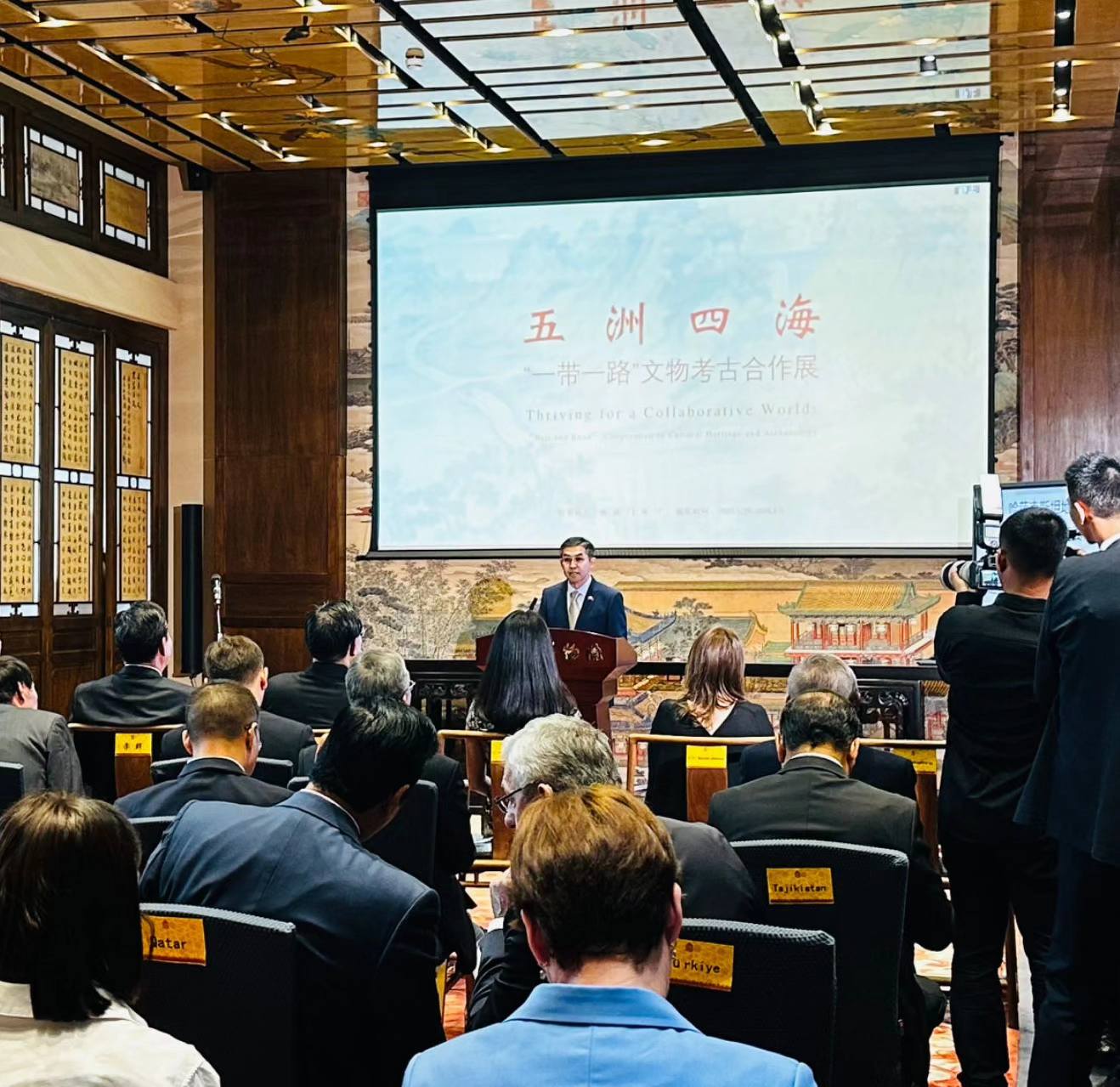ASTANA – The opening ceremony of an exhibition titled “Thriving for a Collaborative World” took place at the Forbidden City (Gugong in Chinese) imperial palace complex at the heart of Beijing on Sept. 28, reported the Kazakh Embassy to China on their Facebook account.

Among Kazakh unique cultural artifacts, the exhibition showcased some items and elements of clothing of the Golden Man. Photo credit: Kazakh Embassy to China/Facebook.
Among Kazakh unique cultural artifacts, the exhibition showcased some items and elements of clothing of the Golden Man, found during excavations of the burial and delivered to Beijing by the Issyk State Historical and Cultural Reserve-Museum to introduce Chinese society to ancient history, culture, and lifestyle of the peoples who inhabited Kazakhstan.
The exposition featured gold items found in the tomb of the Saka warrior dating back to the 4th and 5th centuries BC.
Dedicated to the 10th anniversary of China’s Belt and Road Initiative, the exhibition will run through Jan. 5 next year, showing ancient exhibits from Uzbekistan and the United Arab Emirates.

Dedicated to the 10th anniversary of China’s Belt and Road Initiative, the exhibition will run through Jan. 5 next year. Photo credit: Kazakh Embassy to China/Facebook.
Nurlan Akkoshkarov, Minister-Counselor of the Kazakh Embassy in China, presented the history of Saka burials and artifacts found in Issyk, highlighting the main achievements of Kazakh-Chinese archaeological work.
Alongside artists and media representatives, the event was attended by Chinese Minister of Culture and Tourism Hu Heping, Director of the Forbidden City Palace Museum Wang Xudong, Head of China Foundation for Cultural Heritage Conservation Liu Yuzhu, and Assistant to Uzbekistan’s President Saida Mirziyoyeva.

